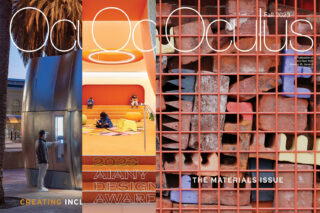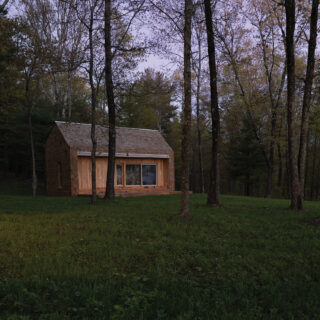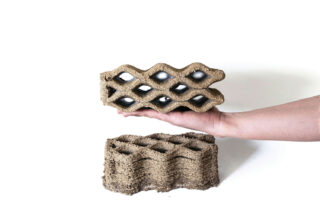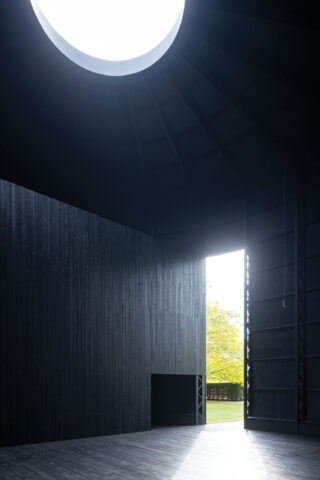The next new thing in material innovation isn’t prohibitively expensive or remarkably high tech. In fact, much of it can be found growing all around us. Several of today’s material innovators are responding to the building industry’s significant contribution to the climate crisis by investigating how to scale up the production of readily available, minimally processed biomaterials such as mycelium, earth, hemp, and wood fiber, to name a few. Others are experimenting with ways to repurpose the most underutilized material of them all—trash streams from construction and post-industrial production. Material experts value the impact building materials have on social equity, and have taken a cue from the restaurant industry’s popular “farm to table” concept to educate design professionals—and the wider public—about the importance of supporting local, sustainable, high-performing product manufacturers. Many agree that the extraction, manufacture, and disposal of building materials is inextricably linked to the health of the larger world. Below, we share the different ways some architecture and design firms, universities, and companies around the country are disrupting traditional architectural material innovation, specification, and application.
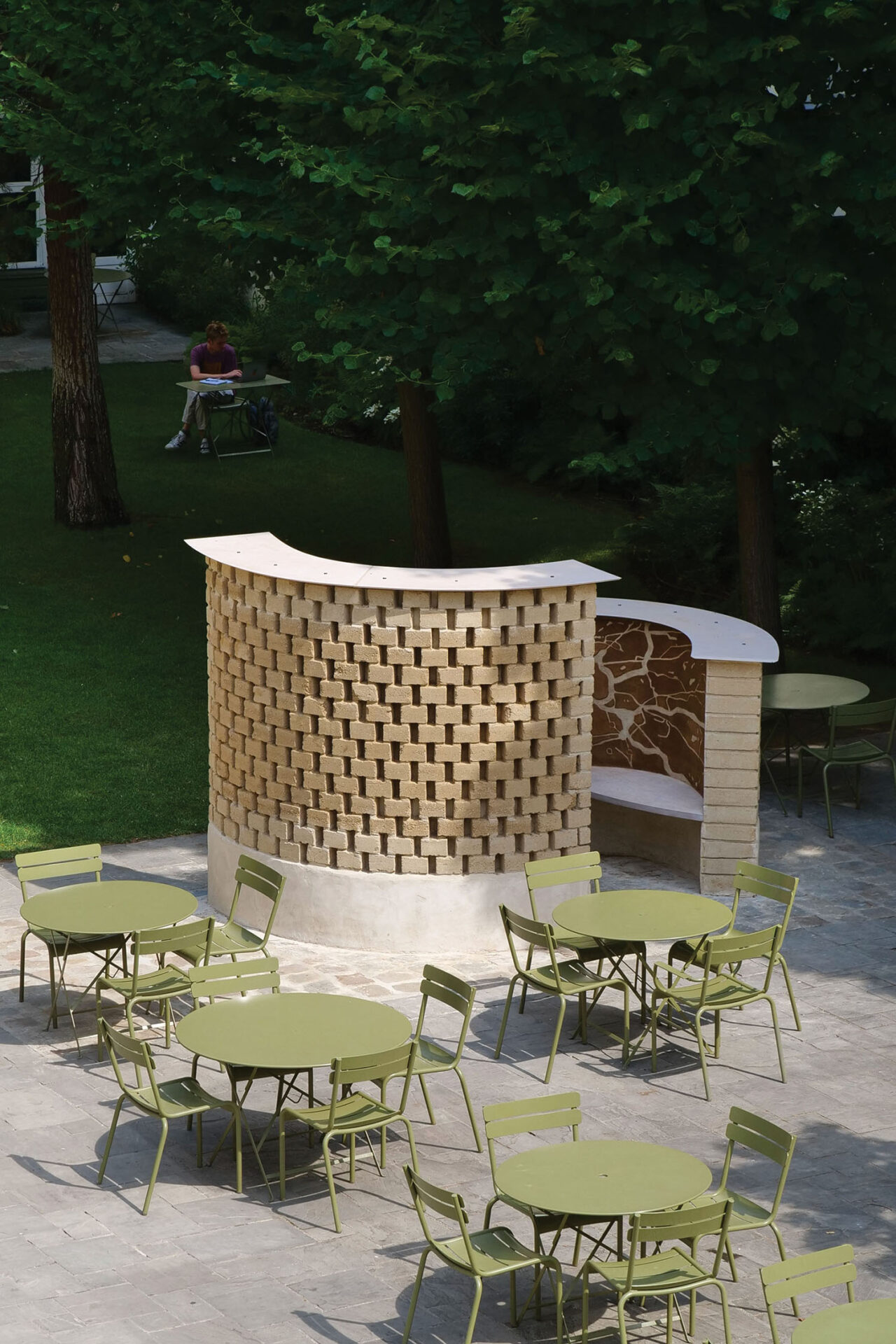
Healthy Materials Lab at Parsons School of Design
New York City
Architects Alison Mears, AIA, LEED AP, and Jonsara Ruth co-founded Parson’s Healthy Materials Lab (HML) to address intersectional issues in the built world and raise the standard for sustainable, healthy, and beautiful housing. With a focus on the field of material health—an ecosystem-first approach—the lab’s two interrelated priorities are reducing climate-changing embodied carbon and the toxins in building materials linked to human disease. “HML centers a holistic understanding of the current toxic life cycle of common building products—from the mining of raw ingredients to refining, production, installation, and emerging circular systems of material reuse,” says Mears.
For the last four years, the lab has taken a deep dive into a plant- and mineral-based product called hemplime. The architects see industrial hemp as a viable agricultural crop capable of rebuilding denuded agricultural soils and improving the soil’s carbon sequestration. A simple matrix of hemp hurd (made from the inner core fibers of the hemp stalk), water, and lime binder, hemplime offers excellent thermal performance and is a sustainable alternative to plastic foam or batt insulation with added flame retardants.
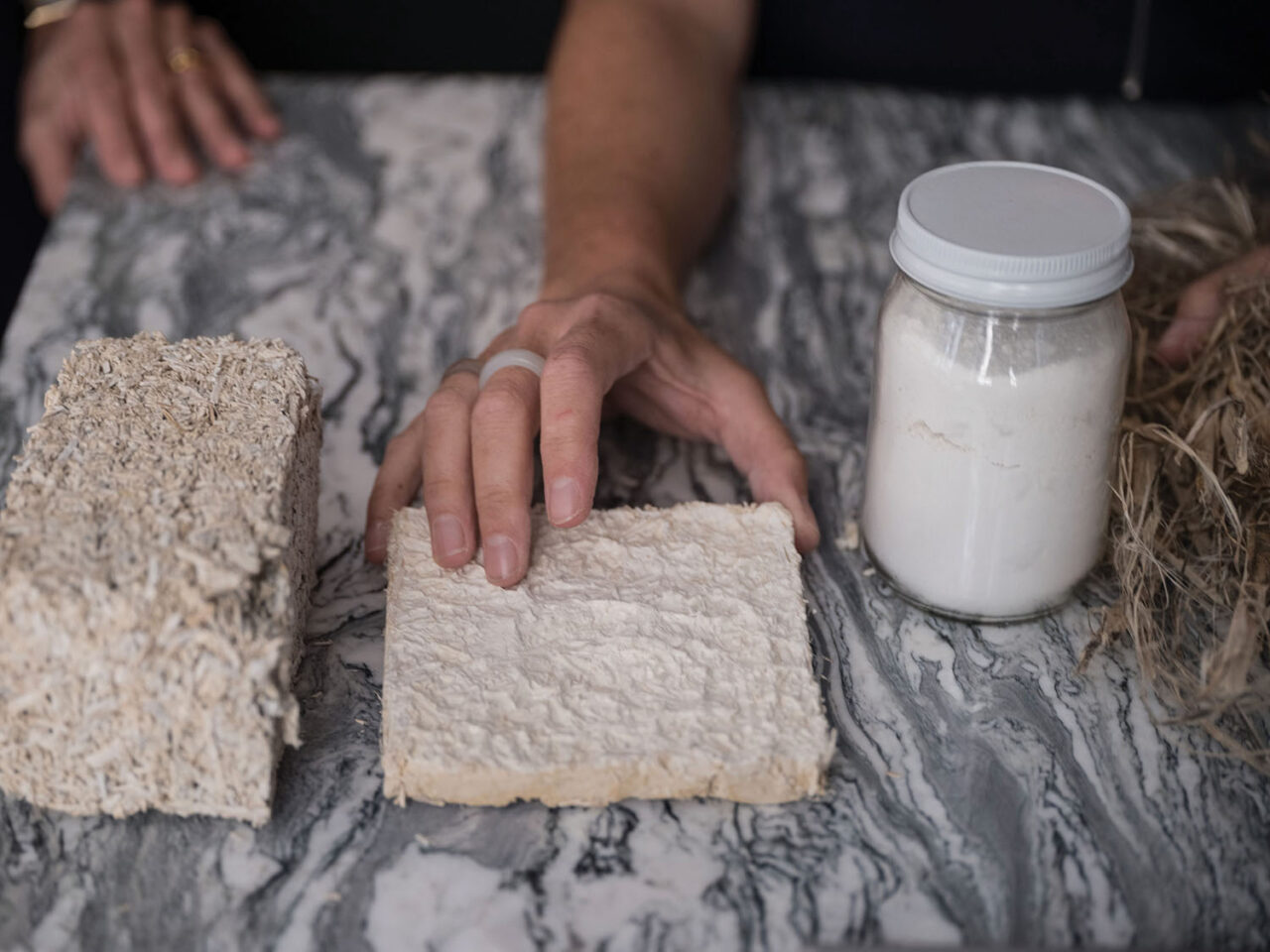
HML is currently working on what it calls a “Farm to Build” concept to create new affordable hemplime housing in rural and Indigenous communities across the United States. One of these is the PA Hemp Home project developed in collaboration with DON Services in New Castle, PA, where it’s become a breathable thermal insulation for an existing wood-frame house. Precast hemplime panels have also been used as the structure and insulation components of the exterior walls in the Elder Housing Project on the White Earth Reservation in north-central Minnesota.
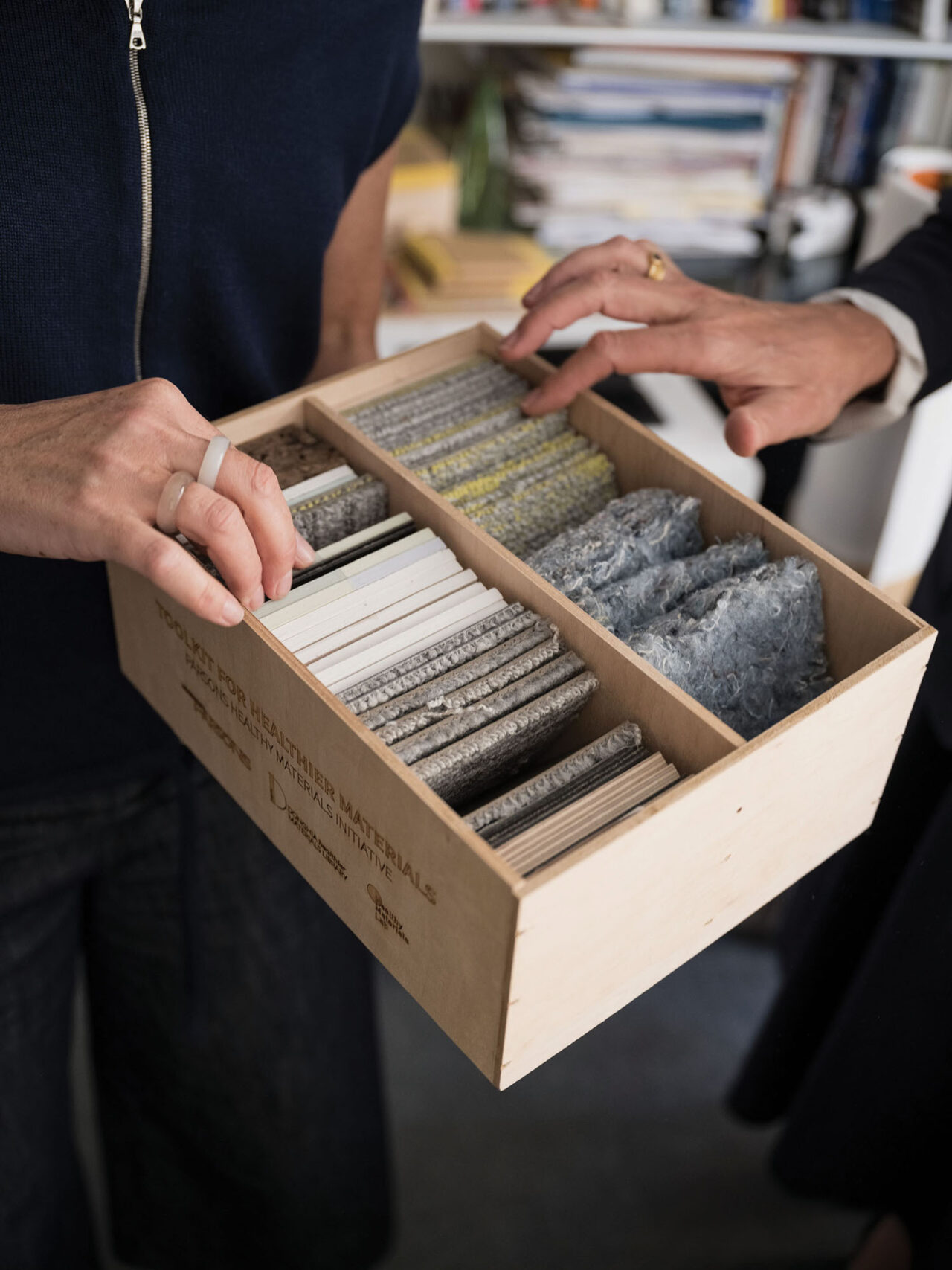
In addition to creating new supply chains and improving construction efficiency to support the production of affordable precast hemplime building materials, the researchers would like to see more use of other plant-based building materials, including straw, seaweed, mycelium, cellulose, bamboo, soil, and clay. “We are interested in scaling the production of new building materials made from these sources,” says Ruth.
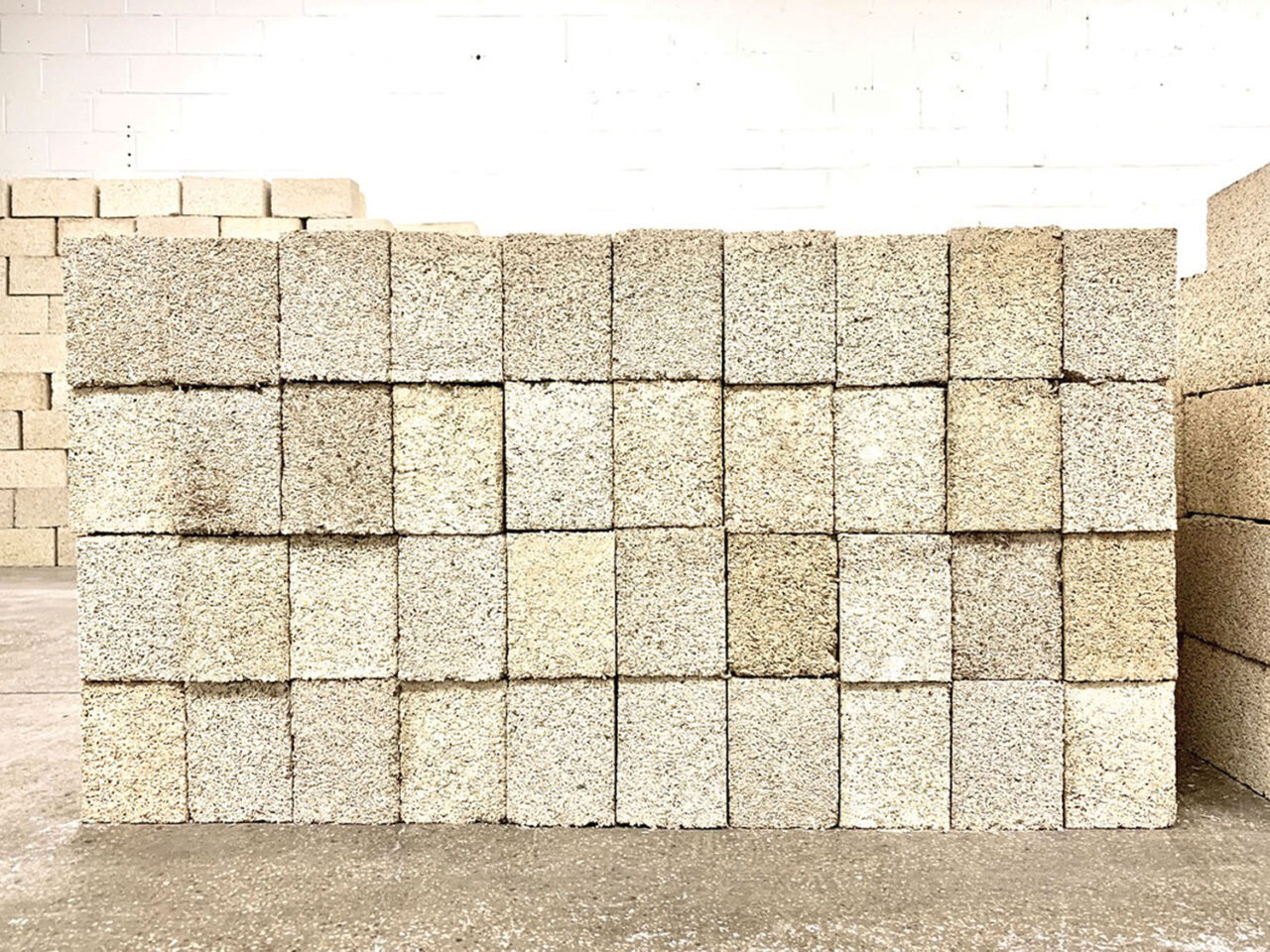
The Natural Materials Lab at GSAPP, Columbia University
New York City
As part of her research as director for the Natural Materials Lab at Columbia GSAPP, Assistant Professor of Architecture Technology Lola Ben-Alon, PhD, investigates raw earth- and fiber-based building materials—addressing their life cycle, supply chains, techniques, speculative design, and policy. By developing design “recipes” and advanced fabrication processes, the lab aims to expand the lexicon of raw materialities in architecture to include natural geo- and bio-materials bound with bacteria, fungi, and the microstructural composition of microbial organisms and inorganic minerals. “The idea is to use the materials as raw, minimally processed, and locally sourced as possible,” says Ben-Alon. “One of my main rules at the lab is that we use only those materials we are able to mix with our bare hands.”
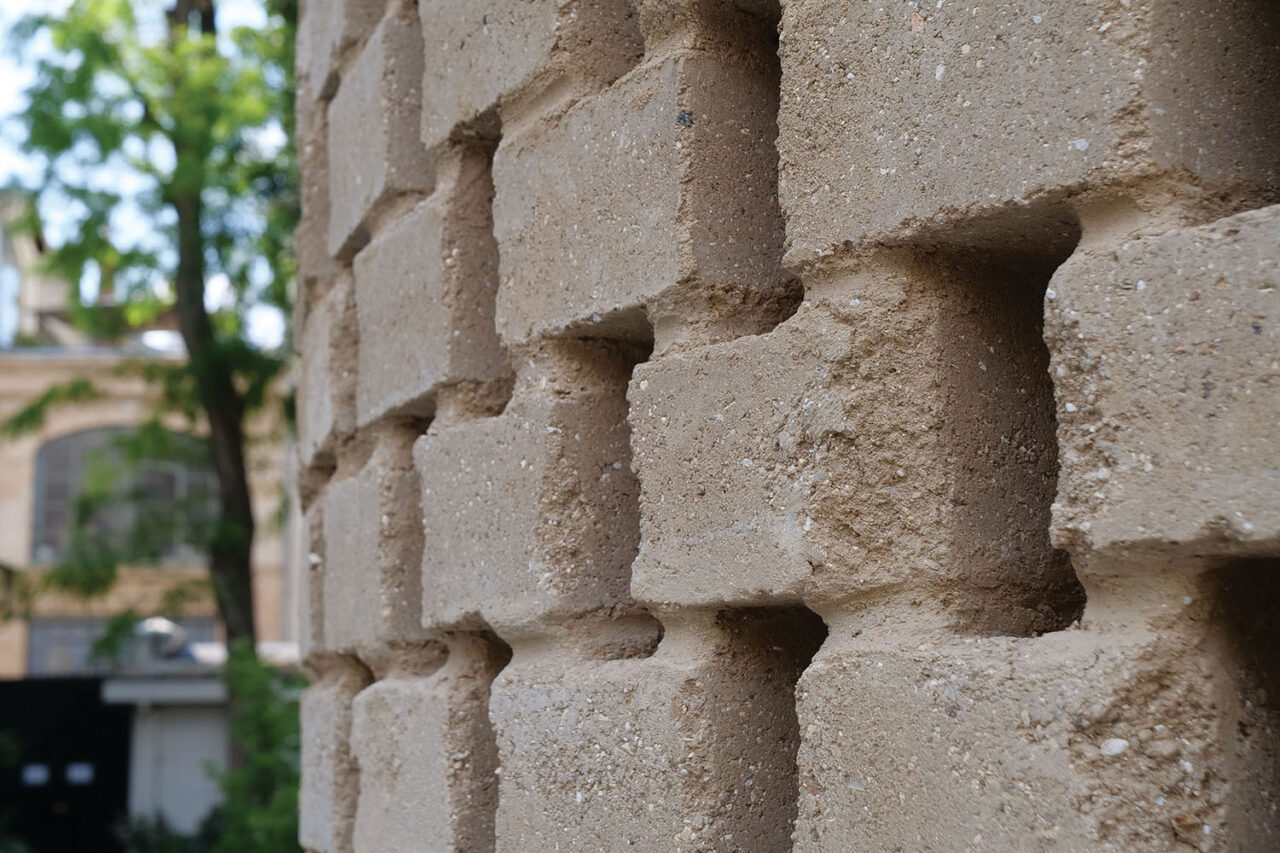
Recent research projects include Farm to Building, an immersive design-build workshop offering a completely raw and untreated rammed earth sans cement or stabilizers, and Raw Earth Sgraffito, an installation in Paris that reflects on the material geographies and supply chains of labor, materials, and resources involved in construction. The lab is currently working on BioMud, wearable earth-based fabrics that can be molded and 3D printed. “Using a novel recipe of soil-based bioplastics,” says Ben-Alon, “we produced flexible fabrics that use earth materials themselves as a circular structure to connect the body to the living and natural processes of Earth.”
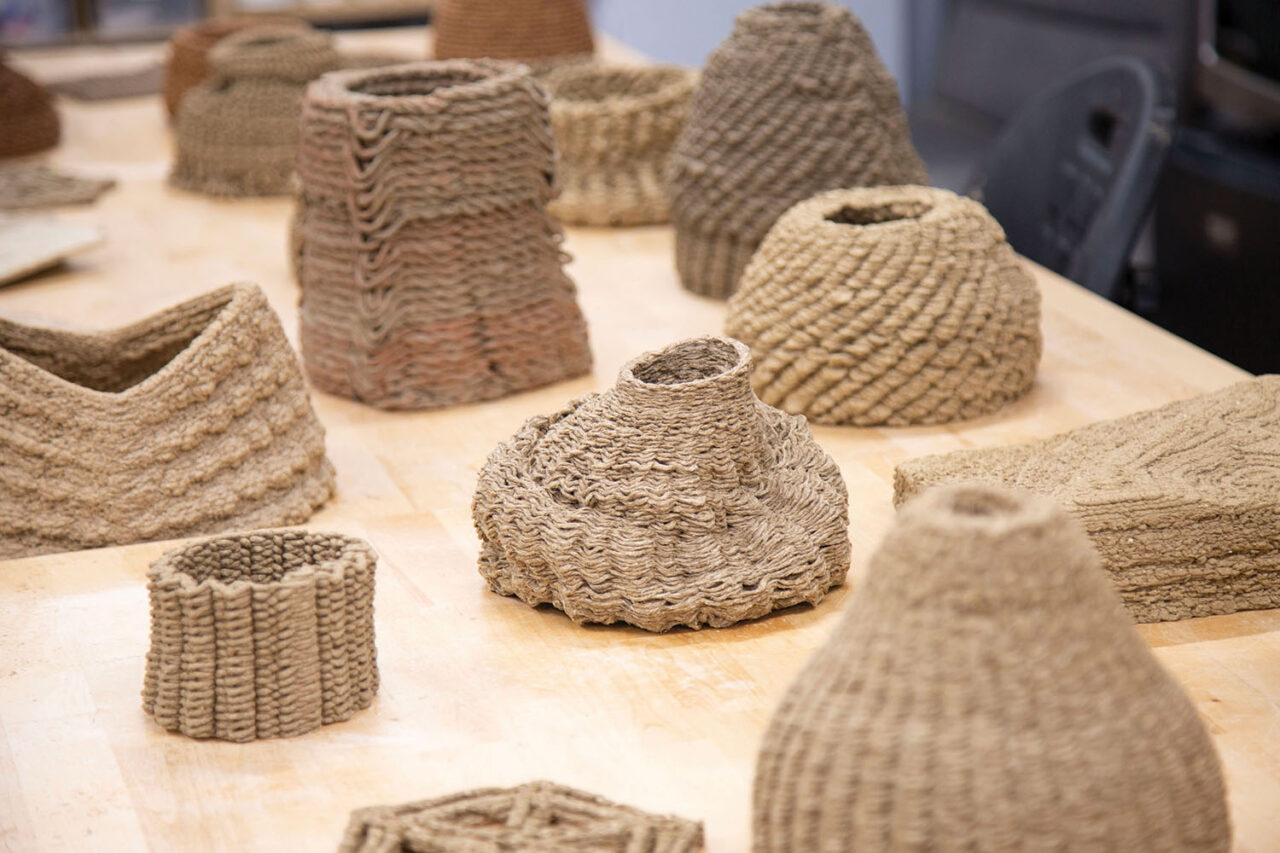
“All architecture material decisions resonate globally,” says Ben-Alon, with each material a result of human labor, crafted hands, and specialized tools, often sourced from distant corners of the world. “Sustainability rests not solely in the final product, but in the intricate nexus among production processes, material characteristics, and their subsequent integration into the built environment.”
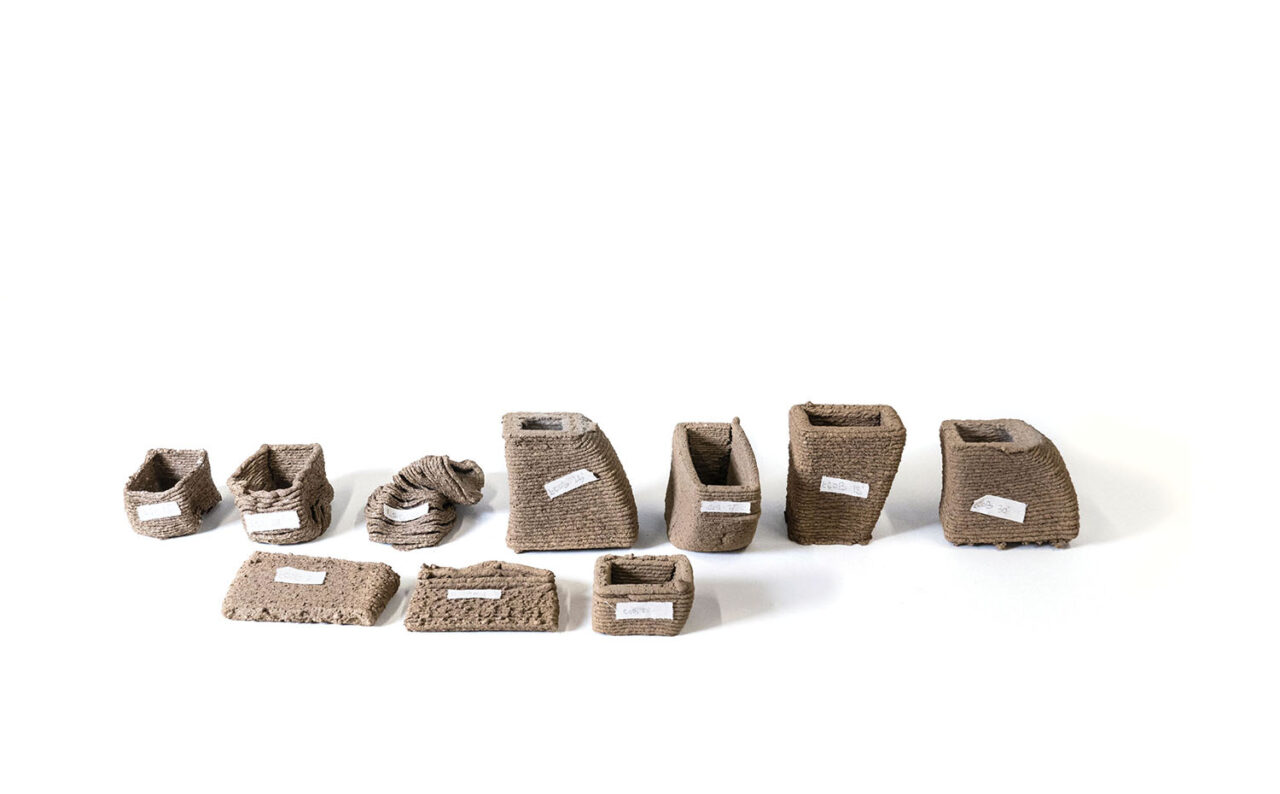
Material Bank
Boca Raton, FL
Material Bank was founded in 2019 as a virtual platform for searching and sampling materials with a sustainable twist: deliveries are shipped overnight for free in reusable and returnable packaging without excess bubble wrap, peanuts, or packaging. “Our mission is to identify and remove pain points from a designer’s objective in order to project manage—from material inspiration, to board building, to specifying, to sampling,” says Elizabeth Margles, executive vice president of marketing and brand at Material Bank. Thousands of materials from hundreds of manufacturers are easily searchable on the site in three categories: Architectural, Materials, and Furniture; Fixtures; and Equipment. Additionally, Material Bank provides carbon-neutral shipping and a custom search menu to elevate sustainability education. “We focus on providing a platform for all our brands to list whatever sustainable certifications they have earned, as we know this is important to our brands and our members,” says Margles. “On the member side, we have over 120 firms that have signed on for our Carbon Impact Program, which measures their impact in their work, what they specify, and how they design.”
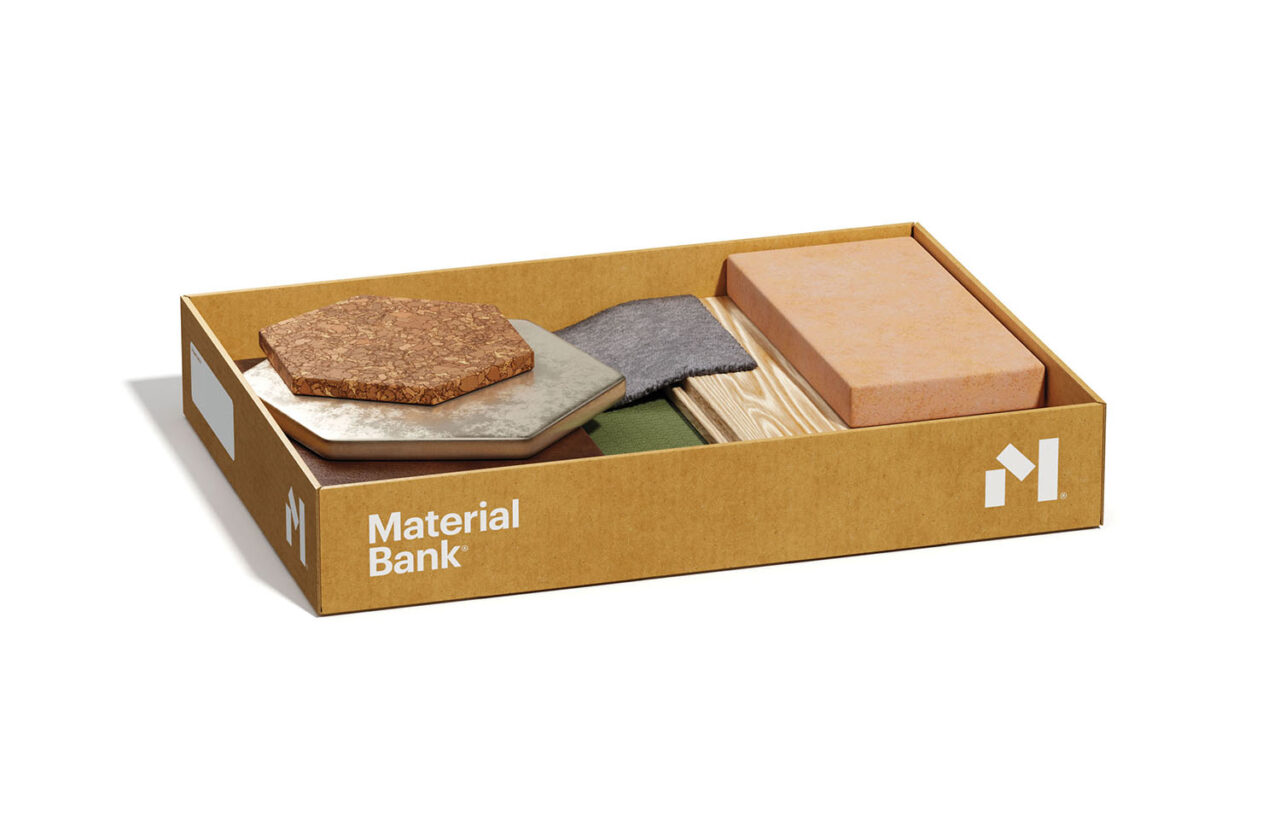
IA Interior Architects became a carbon-neutral partner with Material Bank in January 2021. “Material Bank provides IA with our firm sampling metrics, tips, and tricks to save packages with each sample order and reduce shipping emissions,” says Anne Karel, LEED AP ID+C, a senior project manager and sustainability expert based in the firm’s Bay Area studio. Karel says the firm uses Material Bank as a consolidated platform to avoid creating waste in the specification process for the firm’s tenant improvement construction projects. The platform can also serve as an indicator of where trends are headed in material specification. “We are seeing more attention paid to sustainability, local manufacturing, and, interestingly, getting more questions about climate-related conditions (heat, precipitation, etc.) than previously,” says Margles. “After all, designers really are on the forefront of not just identifying trends, but forecasting them as well, since they consider a whole-world approach to their work.”
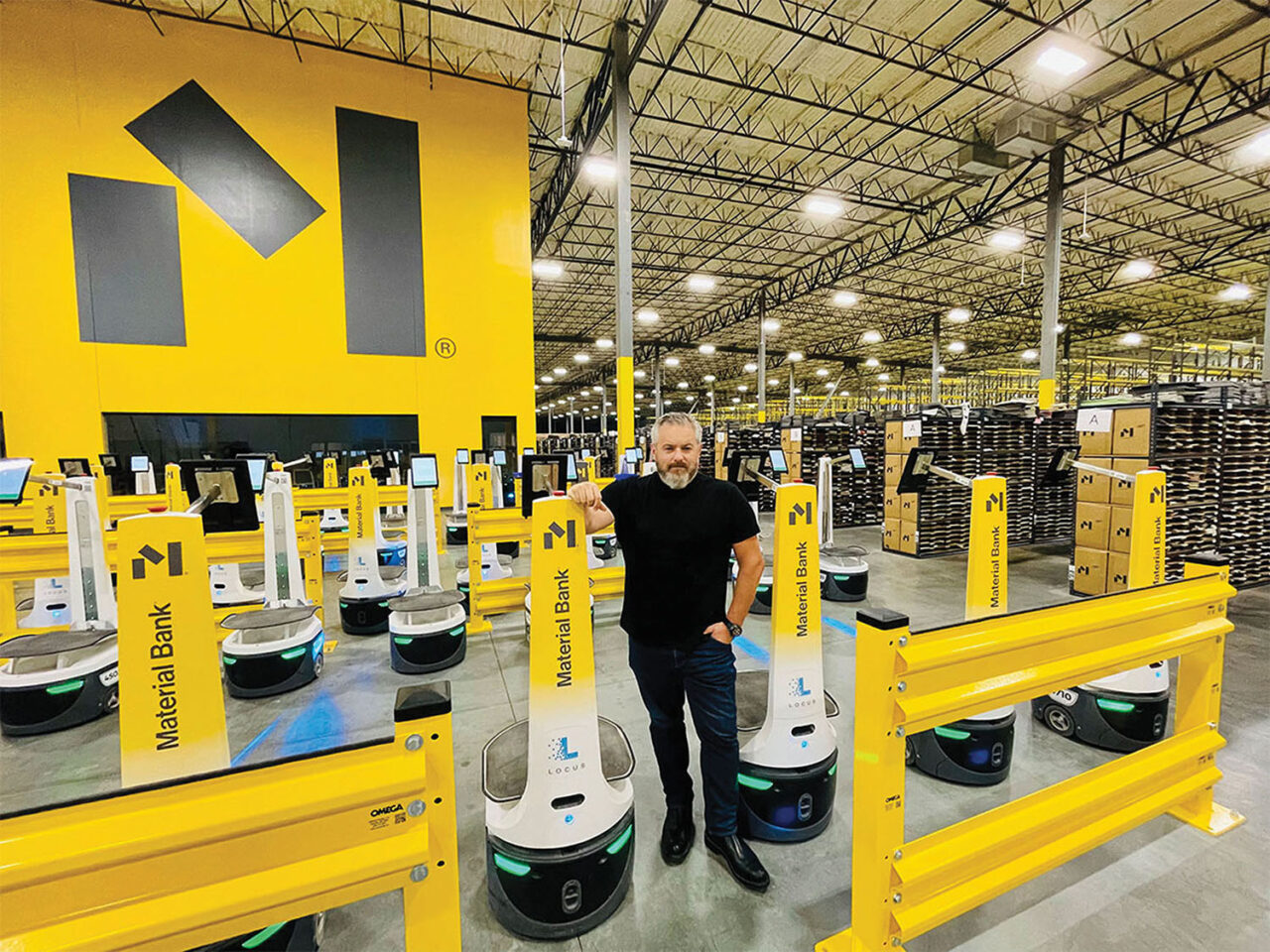
The University of Maine Advanced Structures and Composite Center
Orono, ME
As part of the University of Maine’s Advanced Structures & Composites Center, the Wood Composites team is dedicated to driving research innovation in Green Energy and Materials by testing and manufacturing innovative, sustainable forest products to revitalize and diversify Maine’s forest-based economy. The team’s recent research on wood composites includes mass timber: qualifying cross-laminated timber (CLT) using local species such as Spruce-Pine-Fir South (SPFs); wood fiber insulation (WFI), including a full pilot-scale production line; and assemblies incorporating CLT, oriented strand board (OSB), and WFI. “About half our work is done on behalf of industrial clients looking to improve their products and/or processes, including bio-based resins and fire retardant composites,” says Russell Edgar, wood composites manager at the center. The center has a complete Wood Composites Pilot Line allowing the production of up to four-foot by eight-foot OSB, laminated veneer lumber, particleboard, WFI, and other cellulosic composites on a near-industrial scale. “We work with several architectural firms to educate others on the benefits of using locally sourced wood products in their designs, including CLT and WFI,” says Edgar. This includes work done through the Maine Mass Timber Commercialization Center, which brings together stakeholders in the region to revitalize and diversify Maine’s forest-based economy by way of innovative mass timber manufacturing.

The composites team sees the increasing supply and demand for mass timber as a major driver for mitigating climate change, replacing energy intensive materials—such as steel and concrete—with carbon-sequestering, sustainable, long-lived wood products. According to Senior Wood Technologist Ben Herzog, the most promising material the team sees for the building industry is WFI from companies such as Maine’s own TimberHP. “WFI can help with forest fire risk,” says Herzog, “by utilizing smaller, underutilized species, removing fuel from the forests, and converting it into a sustainable insulation product to substitute for petroleum-derived foams.”
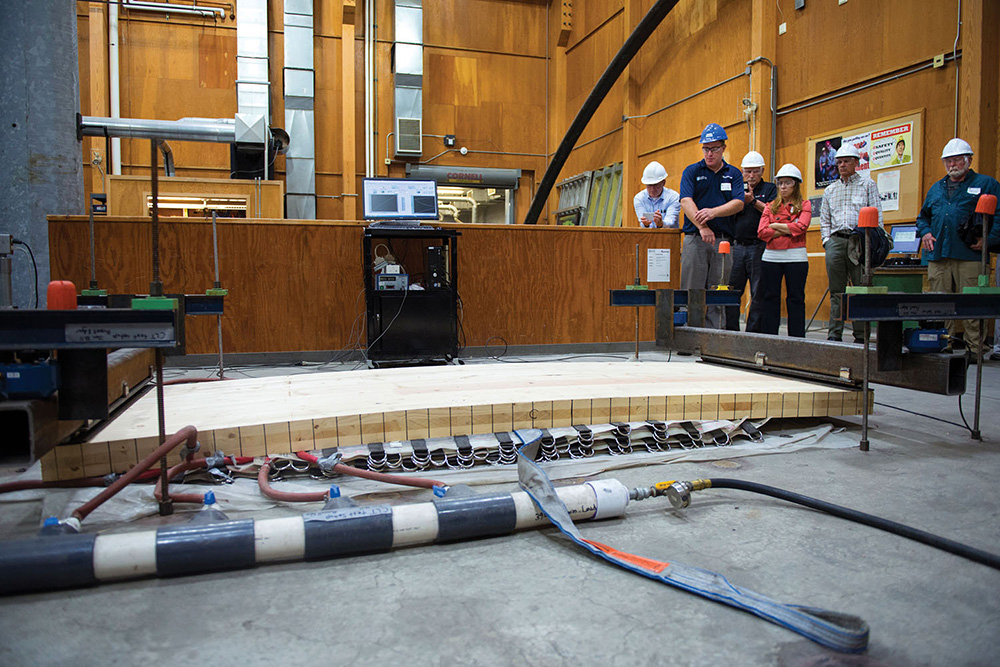
LEVER Architecture
Portland, OR
With its research into mass timber innovation spanning nearly a decade, LEVER Architecture recently concluded the world’s largest shake table test to validate the use of mass timber structures in high-rise buildings in high-seismic areas. According to Jonathan Heppner, firm principal and director of research and innovation, the National Science Foundation-funded project resulted in the successful testing of a full-scale, 10-story resilient mass timber rocking wall structure that could survive a massive 500-year earthquake with no damage.
Inspired by the culinary world’s “farm to table” focus on local ingredients, LEVER coined the term “Forest to Frame” to bring a similar approach to architecture, whereby material innovation cannot be separated from the impact of material extraction on the health of the entire planet. “Many people see LEVER as a firm focused on material innovation in timber, and this is true,” says Firm Founding Principal Thomas Robinson. “But it is important to understand our focus on innovation has always been connected to the material landscapes we work in.”
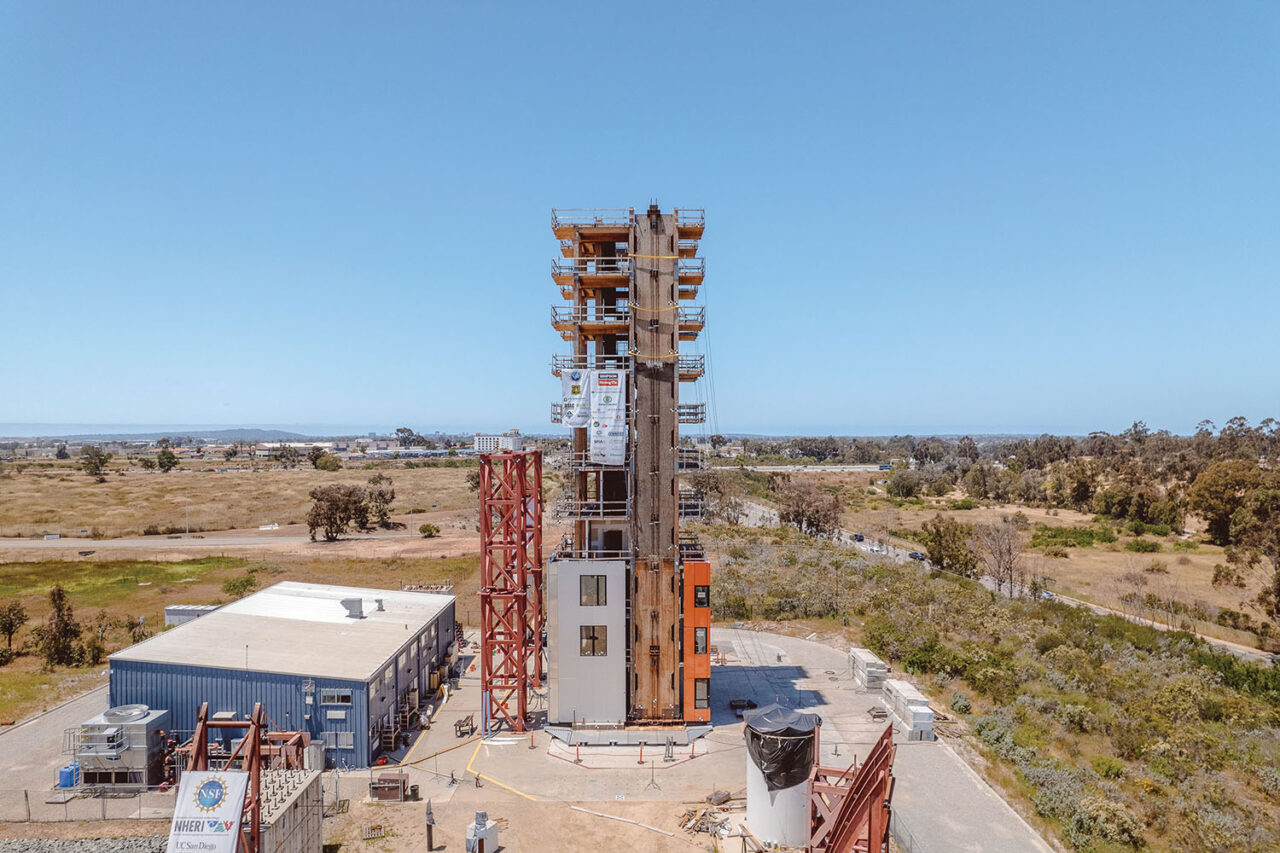
Robinson sees trash streams and the byproducts created in the production of new materials as the most underutilized material in construction. “This is also an issue with timber, and finding ways to turn our trash into something of value is critical and likely the most important work we can do,” he says. “Timber HP, located in Madison, Maine, is building the first timber insulation plant in the United States, and is a perfect example of how the waste streams from traditional timber milling can become a product that not only sequesters carbon, but also performs.”
LEVER works with clients to define what sustainability criteria are important for their unique project. “At its root, sustainable wood is a renewable natural resource representing exemplary harvest, production, fabrication, and building practices contributing to long-lasting social equity, economic prosperity, and environmental stewardship,” says Heppner. “While we’re often required to check boxes, sustainable wood transcends a trademark, certification, or marketing slogan.”
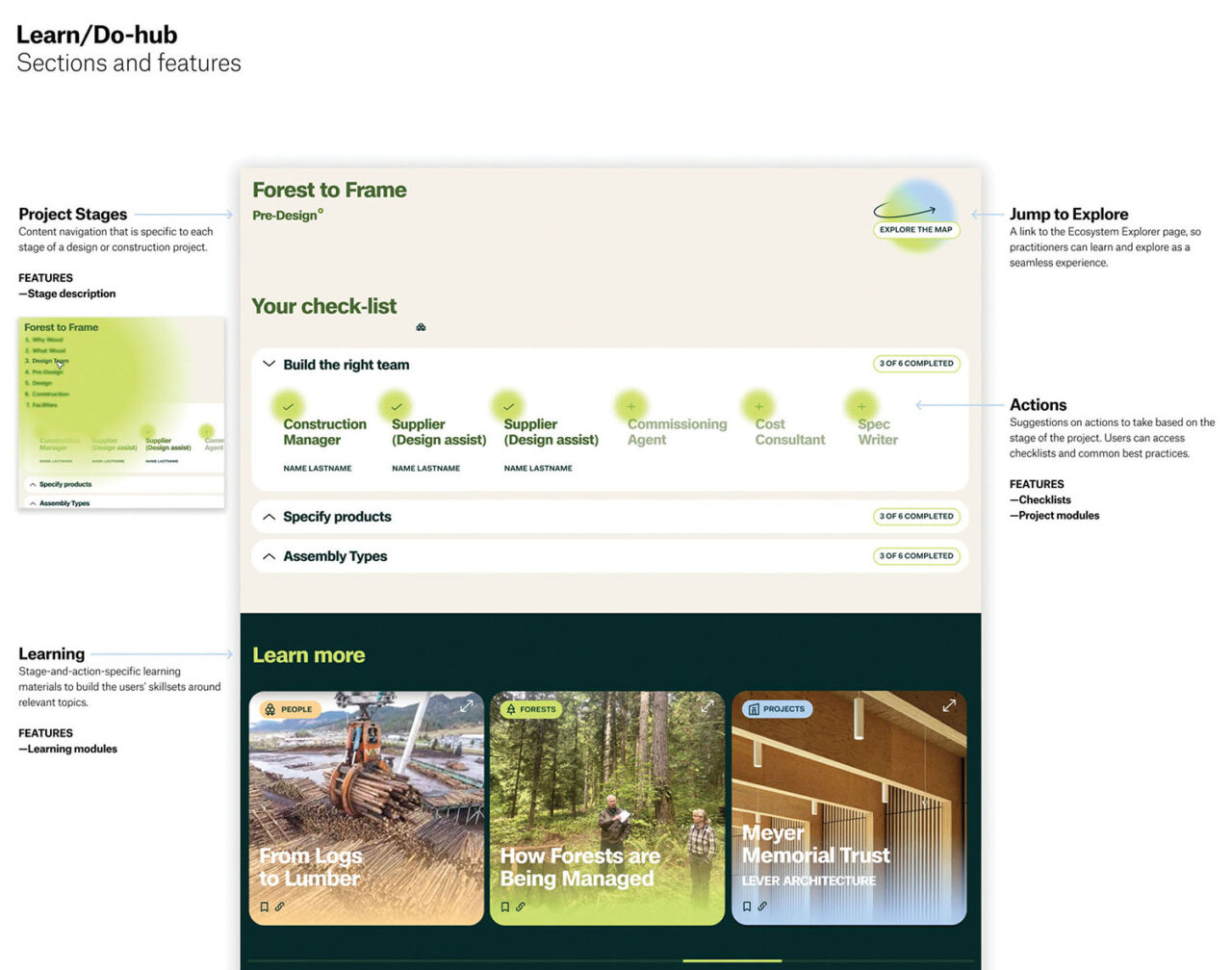
After Architecture, LLC
Charlottesville, VA
Architects Katie MacDonald, AIA, and Kyle Schumann founded After Architecture in 2012 with an emphasis on materially driven public interventions and private residential projects. In 2022 they established the Before Building Laboratory at the University of Virginia to conduct novel material research, collaborate with experts in other disciplines, and pioneer new material assemblies to create carbon-sequestering building material systems. “Over the coming years, we hope to incubate ideas in the academy and implement them in practice,” says MacDonald. The lab’s current work concentrates on grasses, bamboo, and nonlinear wood, exploring possible building strategies for waste logs that are unsuitable for traditional lumber production.
The firm’s Sylvan Scrapple project is currently part of the Exhibit Columbus: Public by Design program in Columbus, IN, on view until November 26. The project draws parallels between waste in cooking and construction to engage the public in discussions about circular construction. “Scrapple, which makes use of butchering waste by combining pork scraps, cornmeal, wheat flour, and spices, is leveraged as a metaphor for assemblies that are greater than the sum of their parts,” says MacDonald.
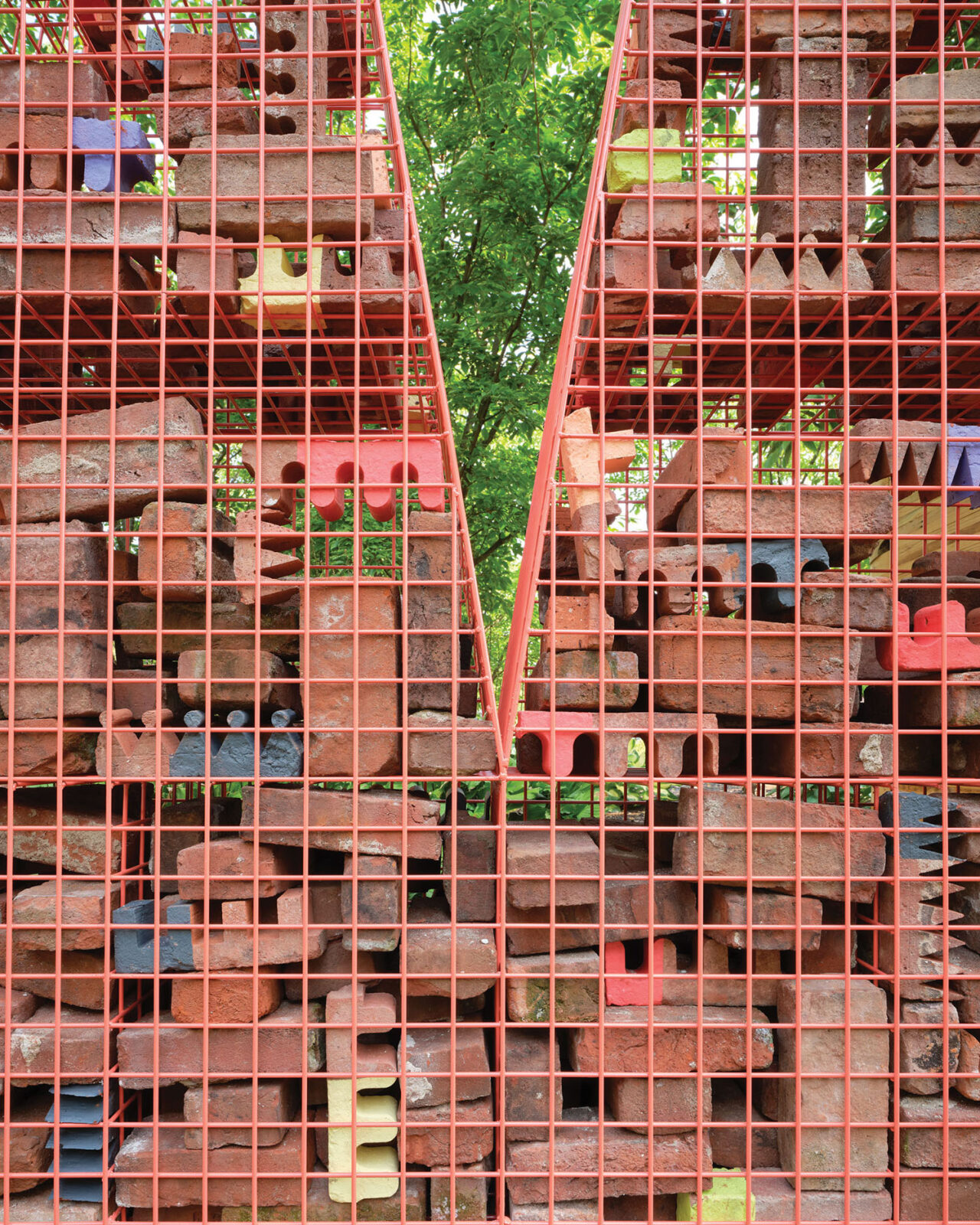
By using different waste streams on the project—walls milled from reclaimed lumber and storm-felled trees, and bricks salvaged from Indiana’s historic Irwin Block building (lost in a fire last year) and the ongoing renovation of Eliel Saarinen’s First Christian Church tower—the firm hopes to show that a resourceful approach can be translated to locally available materials in any context. Composed of snaking walls and gabion furniture, the project adapts the massive planter situated between the Columbus Area Visitor’s Center and I.M. Pei’s Cleo Rogers Memorial Library to the human scale, forming two elevated seating areas, two street level seating areas, and a threshold.
Going forward, the architects hope to close the gap between irregular materials, digital modeling, and construction through the development of both material systems and fabrication technologies. “Our current work investigates how to scale up these new material systems and technologies,” says Schumann. “We are always looking for opportunities to work with industry and professional partners and bring other expertise into the fold.”
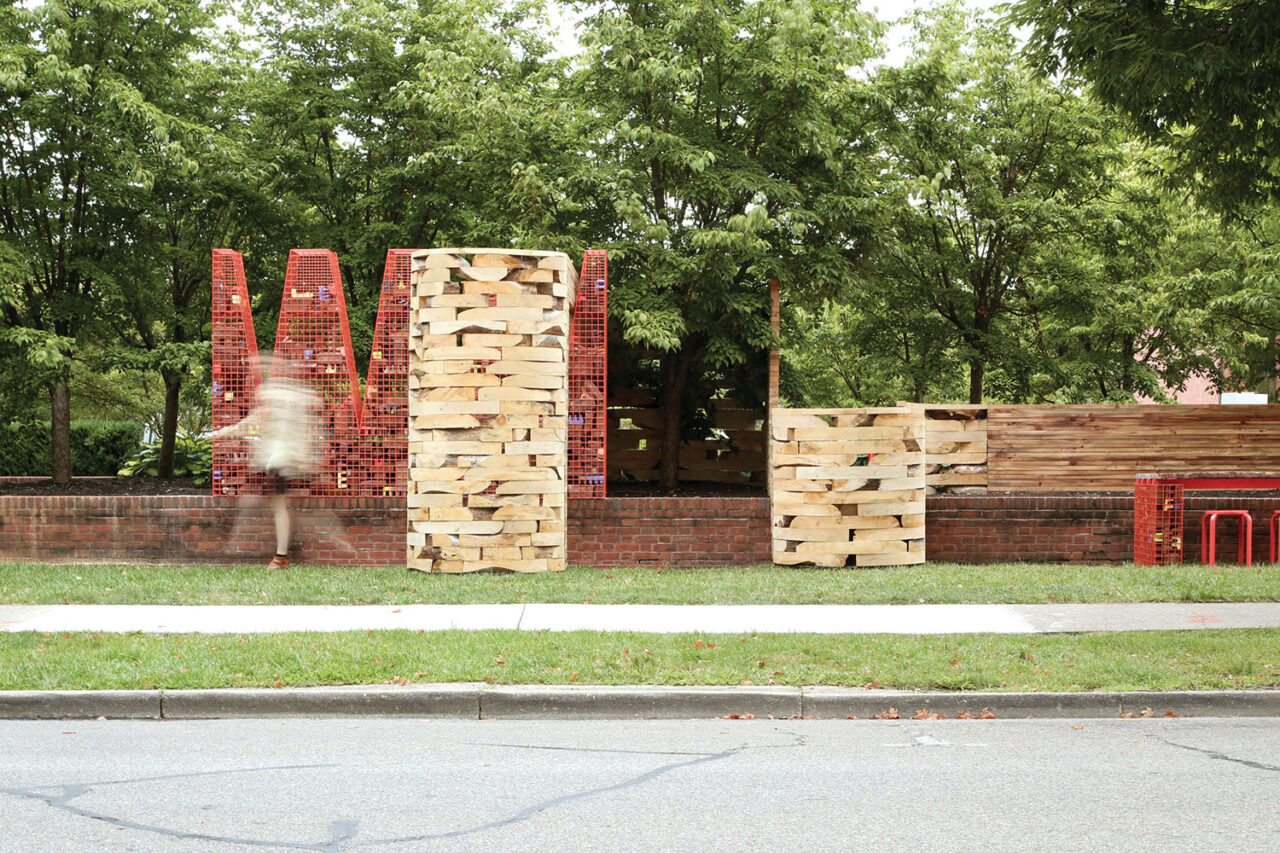
RITA CATINELLA ORRELL is a native New Yorker presently based in the Garden State. A former editor at Architectural Record, she now covers new building products for Texas Architect and her blog, architectstoybox.com.










